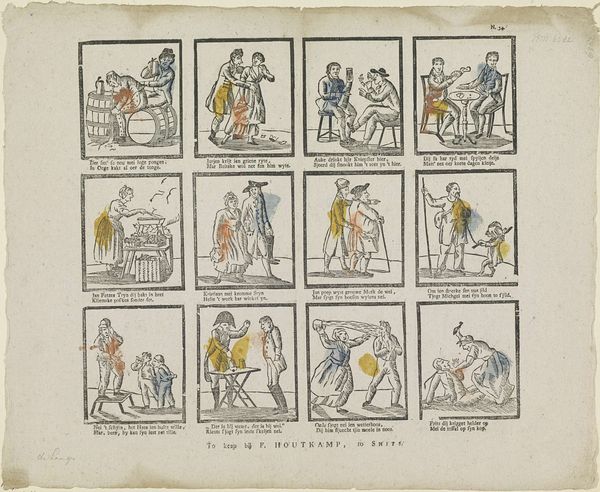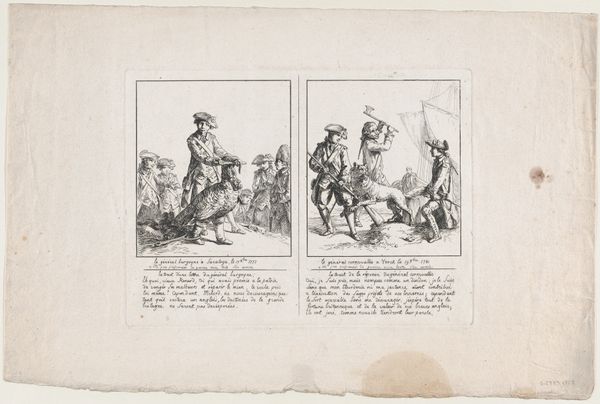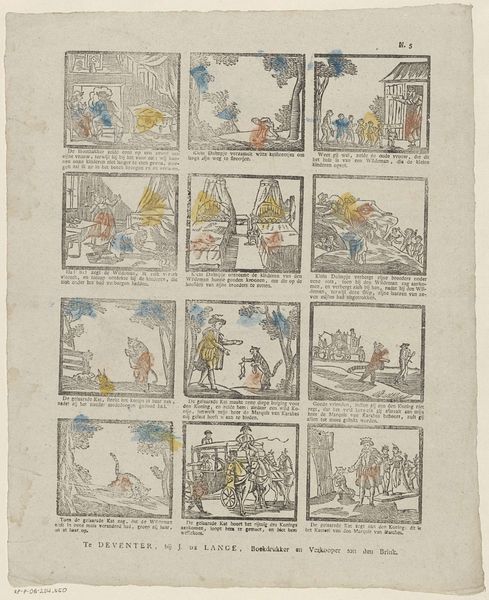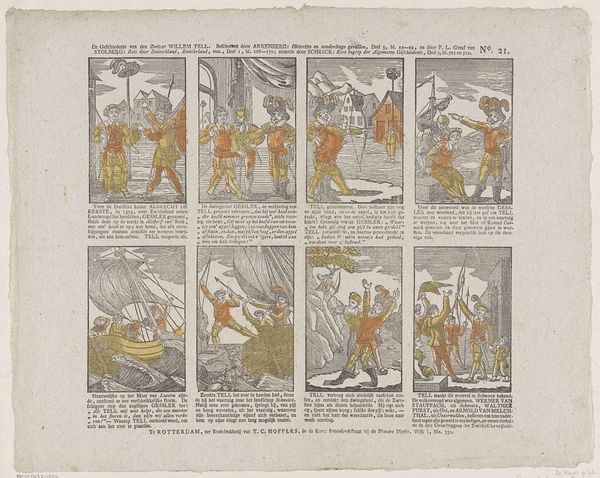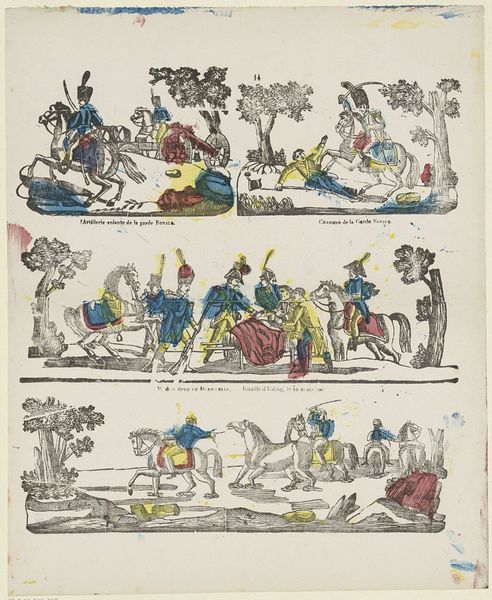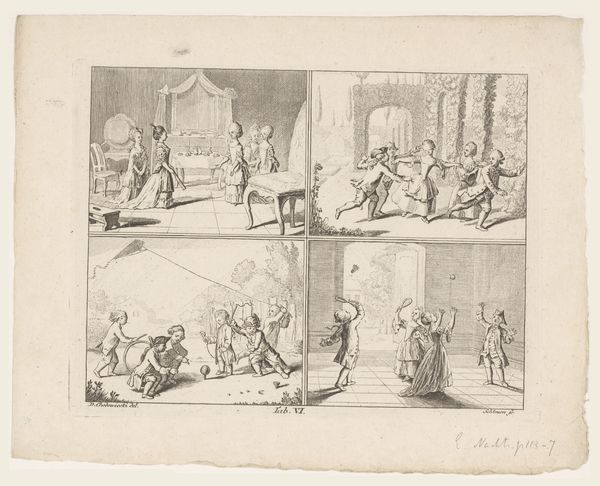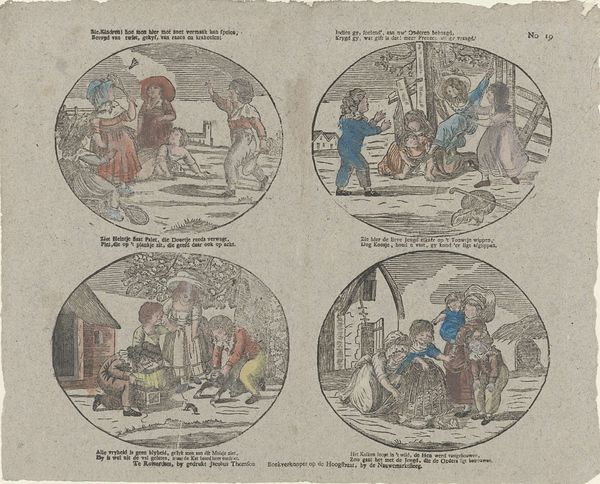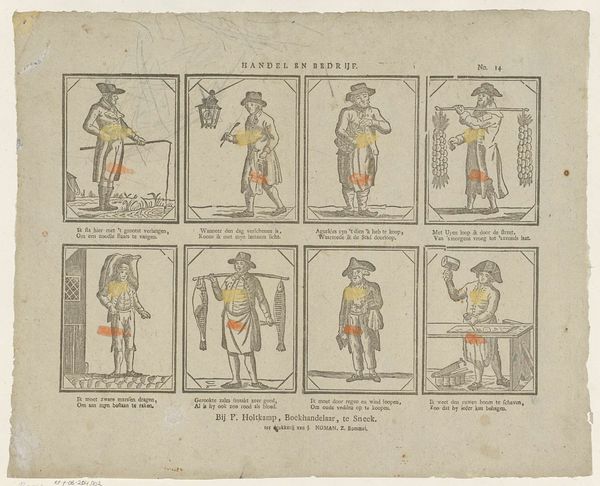
drawing, print, engraving
#
drawing
#
narrative-art
# print
#
romanticism
#
genre-painting
#
history-painting
#
engraving
Dimensions: height 324 mm, width 398 mm
Copyright: Rijks Museum: Open Domain
Editor: This is "Militairen," a print by Jan de Lange II, dating from around 1822 to 1849, currently held at the Rijksmuseum. It strikes me as a curious blend of history and, dare I say, whimsy, with these little narrative boxes and hand-painted touches of color. How do you interpret this work, particularly considering its historical context? Curator: What jumps out is the role of printmaking in shaping public consciousness. This wasn’t just art; it was a readily reproducible medium that brought historical and narrative scenes directly to the people. Think of it as early forms of mass media – influencing how people understood national identity and historical events. Notice the accompanying text beneath each panel – how do you think these captions shape our viewing experience? Editor: They certainly add to the narrative, making it more accessible and probably influencing how viewers understood the events depicted. So, would this have been seen as factual reporting, or something else? Curator: Perhaps somewhere in between. Consider the rise of Romanticism during this period. Artists often prioritized emotional impact and idealized visions of the past. These images, though rooted in historical events, served a purpose beyond simple documentation. They reinforced patriotic sentiments and fostered a shared national identity during a period of significant social and political change. Editor: That's a good point. It’s easy to see now how the style, combined with mass production, could shape public opinion and foster a sense of shared history. It’s more than just pretty pictures. Curator: Exactly. These prints weren’t just artistic statements; they were active participants in shaping the social and political landscape. It highlights the public role of art and the politics embedded in visual representation. Editor: I hadn’t considered that interplay before. Looking at it again, I'm now struck by its power as a propaganda piece almost, influencing ideas about heroism and nationhood. Curator: Precisely! And understanding that allows us to engage with it more critically, seeing beyond just the charming aesthetic. Editor: This has completely shifted how I see this print. I'll never look at seemingly simple historical artworks the same way again. Thank you!
Comments
No comments
Be the first to comment and join the conversation on the ultimate creative platform.

